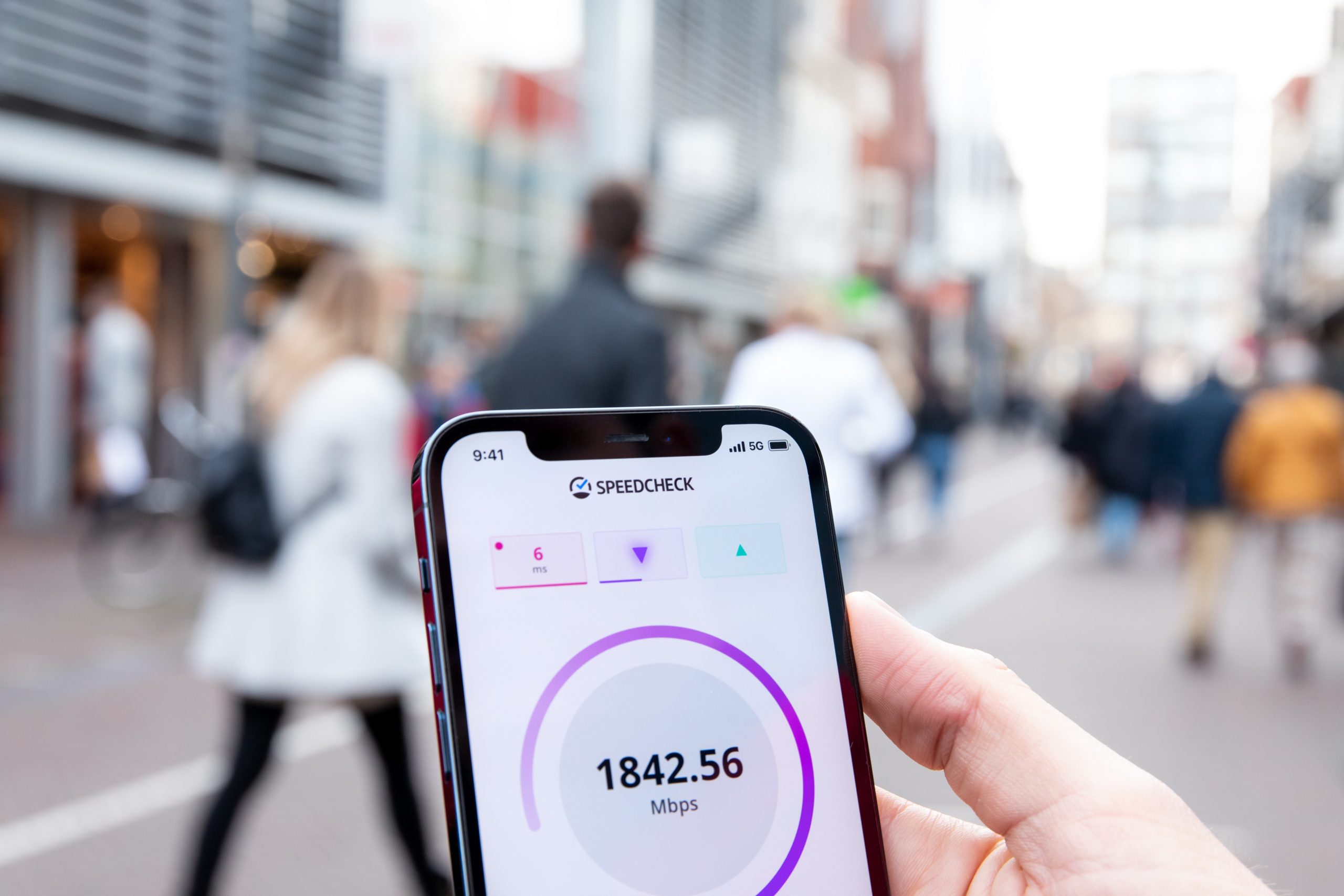What a 5G Future Could Look Like

Imagine the power of 5G. Uber-fast connection within 1-4 milliseconds. Millions of devices connected per square mile. The promise of new invention through uninterrupted connection.
5G is set to transform our world in ways big and small. Though using 5G for your Zoom calls sounds pretty incredible (no more frozen screens!), perhaps the most exciting potential of 5G is for industries such as medicine, transportation, manufacturing, agriculture, etc. With amped up connection, businesses can dream up new products and services – even life-saving solutions such as remote surgery.
As experts in 5G and digital antenna system installation in the Bay Area, our team at WBE has already seen this impact firsthand. And it got us thinking, how else could 5G transform our lives for the better? So we put together this list of potential future uses to give you a sense of 5G’s exciting future. Though it won’t happen overnight and there are plenty of obstacles down the road, 5G is already generating new hopes for our increasingly digital world.
1. 5G Consumer applications
First of all, 5G can enhance the performance of our consumer apps. This is no small matter, as we now use our devices for a range of daily living tasks. It’s exciting to imagine our smart home devices – doorbell cameras, smart thermostats, digital ovens, etc. – connecting and giving us more insights.
In addition, coverage with 5G antennas will provide much-needed broadband internet service in rural areas. The FCC is specifically incentivizing investment through the 5G Fund for Rural America. With 5G coverage, for example, rural children can connect to their online classes and remote employees don’t have to worry about lag time in isolated areas.
5G is also driving innovative uses for augmented reality and virtual reality. For a realistic experience, these apps rely on seamless connection and low latency, which 5G can deliver. For example, 5G-powered AR and VR could become a normal part of classroom learning and emergency management.
Of course, 5G will transform fun sectors like tourism, gaming and entertainment, too. With low-lag 5G, video games are set to become extraordinarily immersive and may even include sensory experiences.
Live entertainment, such as football stadiums, will also be powered by 5G to improve connection in a crowd and enhance the fan experience – such as getting instant replays, checking live stats about a player and participating in stadium contests.
2. 5G & Autonomous vehicles
Autonomous cars have been on our radar for a while, but 5G can support even greater road uses. With 5G, autonomous cars could “talk” to each other, providing super-fast feedback to flag hazards and keep everybody safe.
This could be especially interesting for freeing up city infrastructure and coordinating traffic among vehicles for less commute time and more convenient routes. In turn, this could help with city planning efforts, including construction work and emergency response.
In addition, 5G-supported cars are handy for the trucking and delivery industry. Companies could use remote delivery fleets to ship goods across the country, while local stores could fill orders using autonomous delivery.

3. 5G Telemedicine
Telemedicine is another exciting area for 5G to enhance health coverage and save lives. With 100% stable connection via 5G, health care workers can perform new medical procedures, therapies and monitoring. In particular, 5G could lead to seamless:
- Remote medical appointments and procedures
- Homecare for rural areas and the elderly
- Internet-connected ambulances
- Precision and robotic surgery
- Real-time monitoring of patient symptoms via apps
- AR-powered physical therapy
- AR & VR for medical training and education
- Easy transmission of large MRIs and image files
- 3D printing for urgent care needs
The potential for telemedicine is truly endless with 5G, though we’ll have to see what patients are comfortable with. Remote robotic surgery may still sound too futuristic for many.
4. 5G Supply chains
5G will streamline the way supply chains are managed and bring new real-time QA standards. Warehouses often rely on no-lag connection in order to run an assembly line and/or fulfill orders, and 5G can bolster these efforts.
Sensors, AI and more have already made great strides in this regard, but 5G will allow technology to become hyperconnected and coordinate efforts for maximum efficiency and safety. Industrial robots will likely become the norm as human functions are replaced by 5G-synched technology.
Moreover, 5G supply chain will likely impact how inventory is processed, as physical stores shut down and are replaced by AR-powered showrooms that don’t require checkout. Inventory managers will be able to fulfill personalized products, autonomously react to supply/demand needs and monitor packages from door-to-door.
5. 5G & Internet of Things (IoT) applications
The Internet of Things (IoT) has generated buzz in recent years, but it will reach full potential with 5G. In fact, experts predict that IoT will connect 50+ billion devices by 2030. The idea is to create IoT ecosystems that bring together interconnected insights for smart cities.
Take for example, the concept of a smart building. Having indoor sensors for pedestrian movement may mean you no longer have to wait for an elevator! An IoT-integrated building may also enhance real-time feedback, such as knowing when a pipe bursts or if there are earthquake tremors.
Energy and utilities management companies like Pacific Gas & Electric Company here in the Bay Area can also do more with 5G. City-wide smart grids could maximize energy efficiency for charging cars, while smart utilities could allow bins to ping for pick-up when full.
Smart cities are likely the future, but they’ll require 5G to interconnect across devices and create data-driven ecosystems. In turn, this same type of technology may help power smart space stations in the far future.
6. 5G & Agriculture
Finally, the agricultural industry can make use of sensors and devices to improve daily tasks on the farm. 5G will not only provide rural connection, but also allow for IoT ecosystems of machinery, devices, sensors and drones.
In the fields, farmers can track key metrics such as growth, disease and weather, as well as action points related to watering or spraying crops. In particular, aerial drones can give farmers insight into exactly what and where these items should be performed.
This goes for livestock as well. Monitoring livestock health can be complex, but 5G systems can allow for real-time insights into symptoms and the creation of personalized plans for food, vaccinations, health appointments and daily care.
Finally, machinery maintenance is also a critical function in agriculture. With 5G-powered data, farmers will get notified of real-time hazards and access predictive maintenance to know when to most efficiently get their equipment cleaned and maintained.

5G implementation challenges
For now, 5G installation is a slow and steady process. The exciting potential of 5G will only be unlocked by city-wide 5G antenna installation. Yet, there are challenges to get 5G networks up and running. Here are a few sticking points for building 5G networks:
Investing in infrastructure
To install 5G networks, heavy investment is required. 5G has even been called the “greatest infrastructure project in US history.” The global cost of 5G is predicted to top $12 trillion dollars within the next 15 years. For this reason, it will take years of effort to get enough investment for full 5G coverage.
Importance of public and private partnerships
5G roll-out will require organizations to work together to obtain investment and install infrastructure. This includes governments, businesses, mobile carriers, device manufacturers, software providers and installation services (like us!). Only through partnerships will we be able to coordinate and bring together all the components needed for 5G.
Complex network needs
5G networks have complex needs in order to work seamlessly. For example, 5G antennas and base stations must be installed within denser networks because of their shorter range. This requires significant investment and know-how to achieve coverage.
User wariness of security and privacy concerns
Finally, though 5G infrastructure has its barriers, it’s also worth noting that some users are concerned about the security and privacy of 5G. Because of its hyper-connected nature, people are worried about cybersecurity, as well as personal data theft and location tracking.
Join the future and install 5G antennas
As we’ve explored above, 5G is soon set to transform our world. Though it will take time, investment and coordination, the possibilities of 5G connection could revolutionize key industries and lead to new opportunities.
In short, a future with 5G is full of potential. As you consider getting your business 5G-enabled, you can lean on our experience at WBE (W. Bradley Electric). In addition to electrical and telecom installation, we’ve partnered with experts in 5G and digital antenna systems.
Get in touch to learn how we can work together to power the future of 5G!

